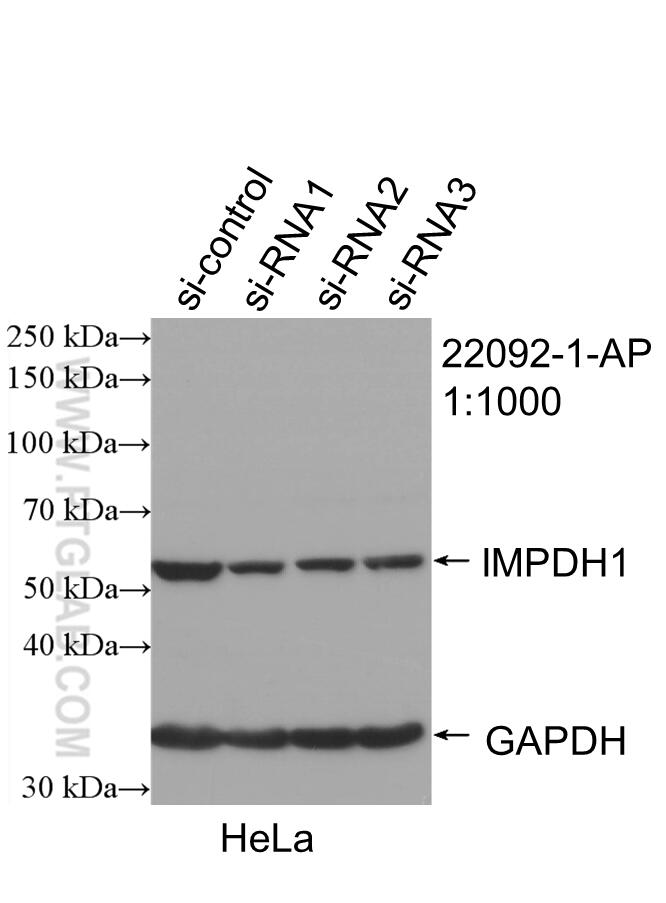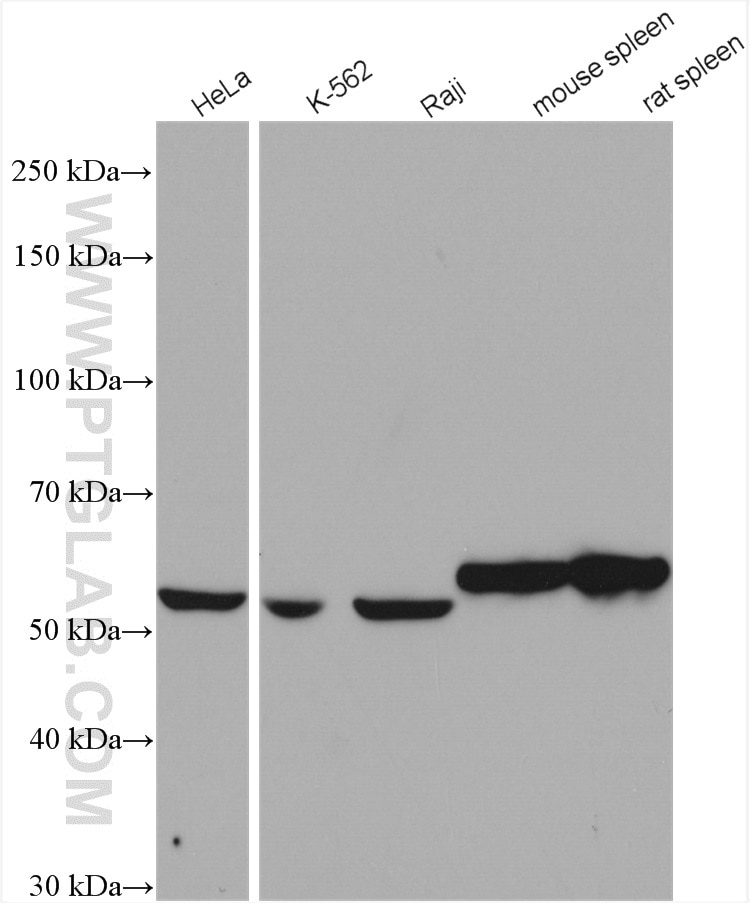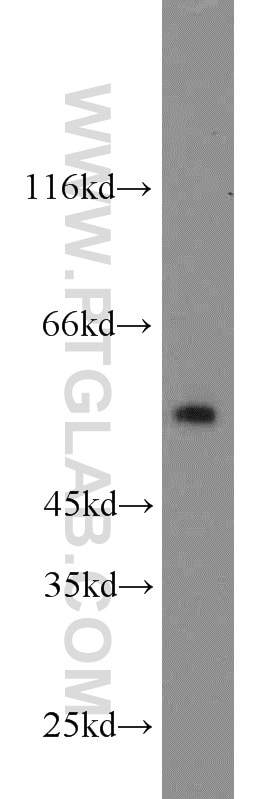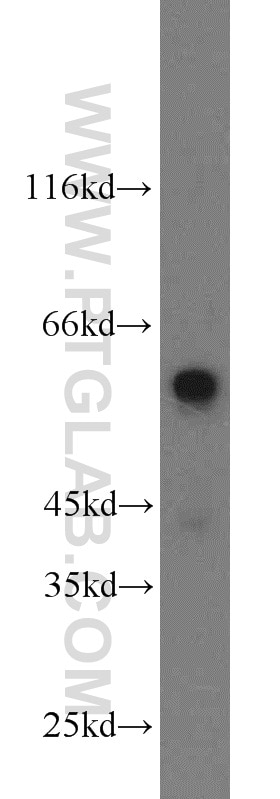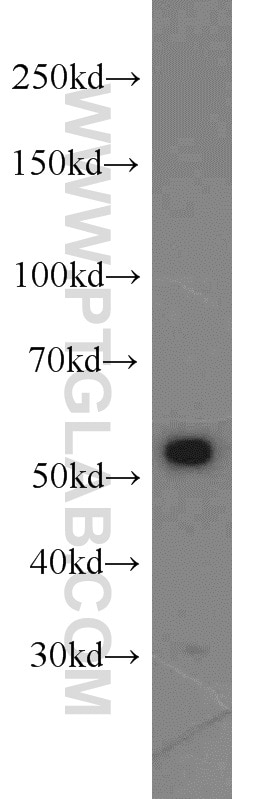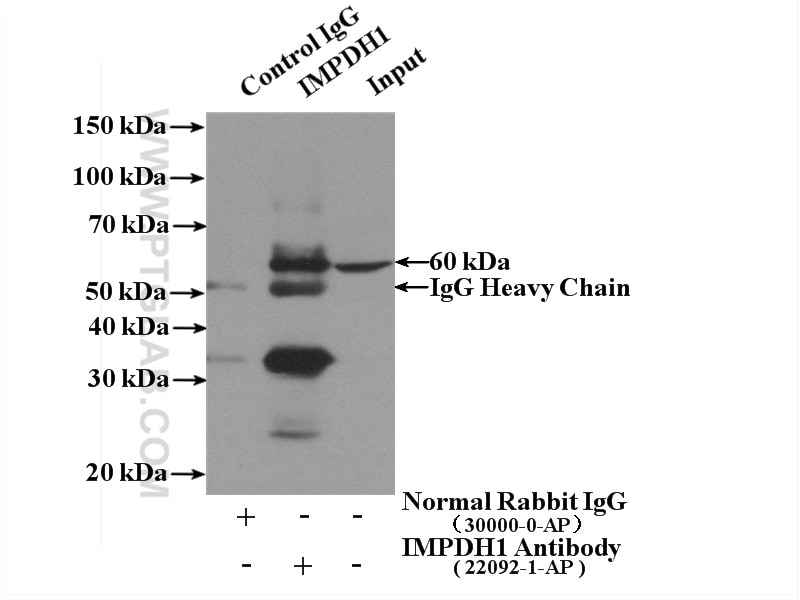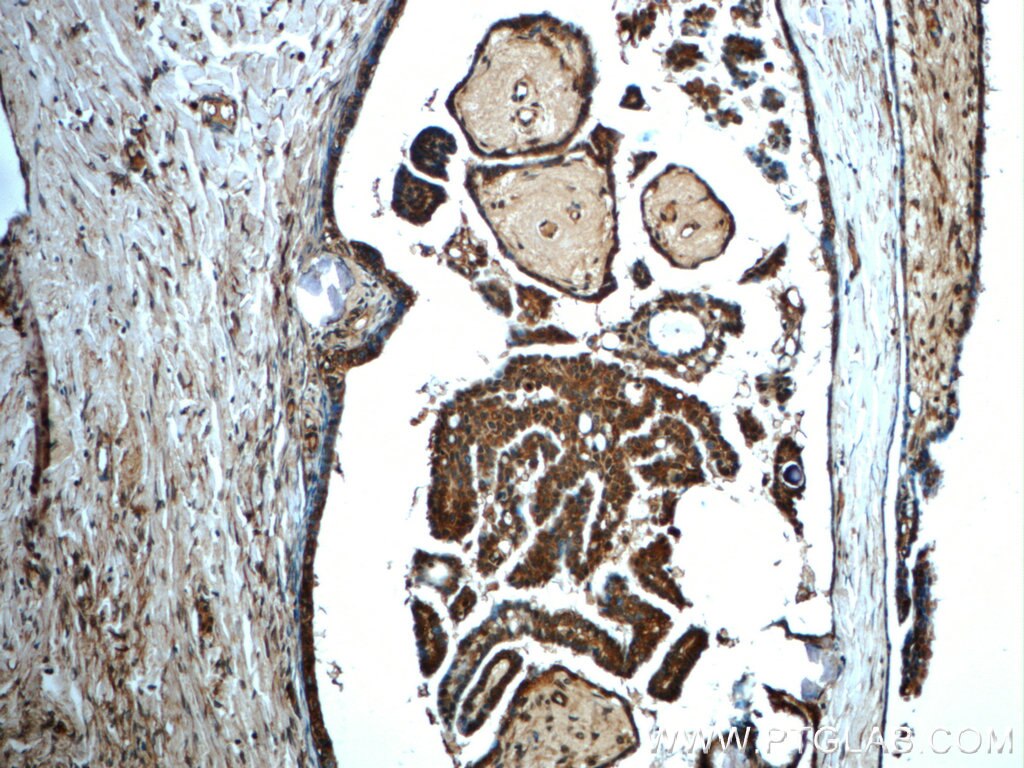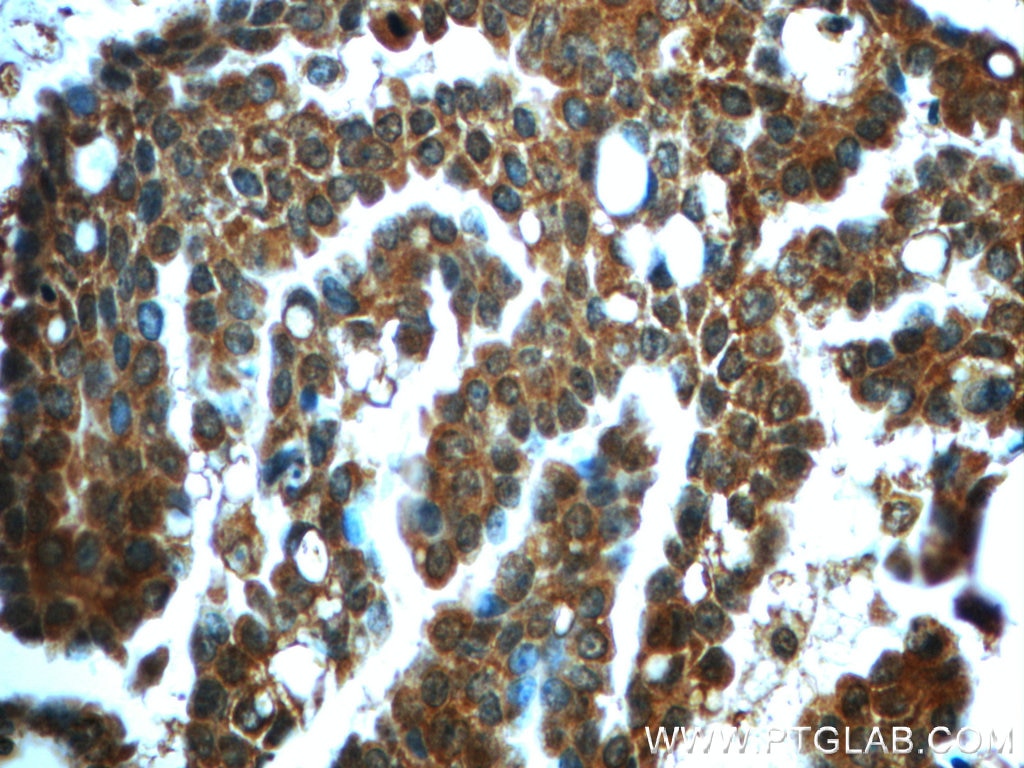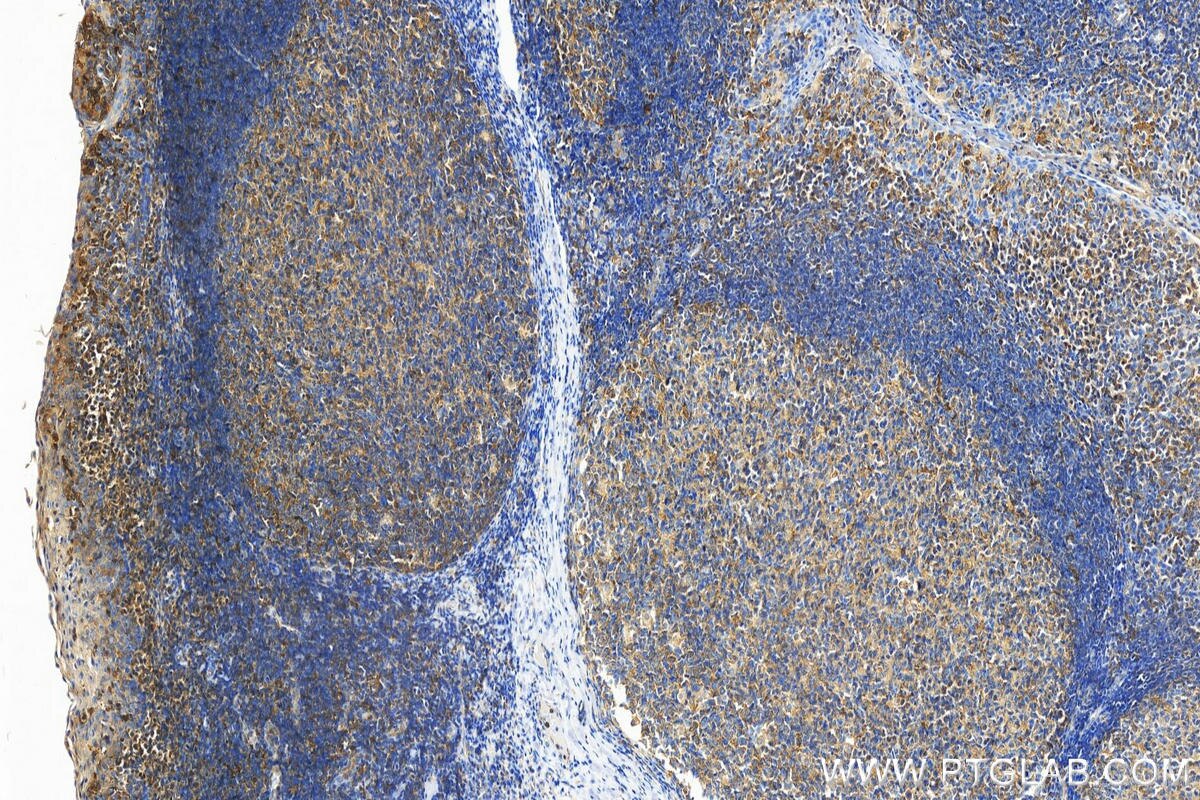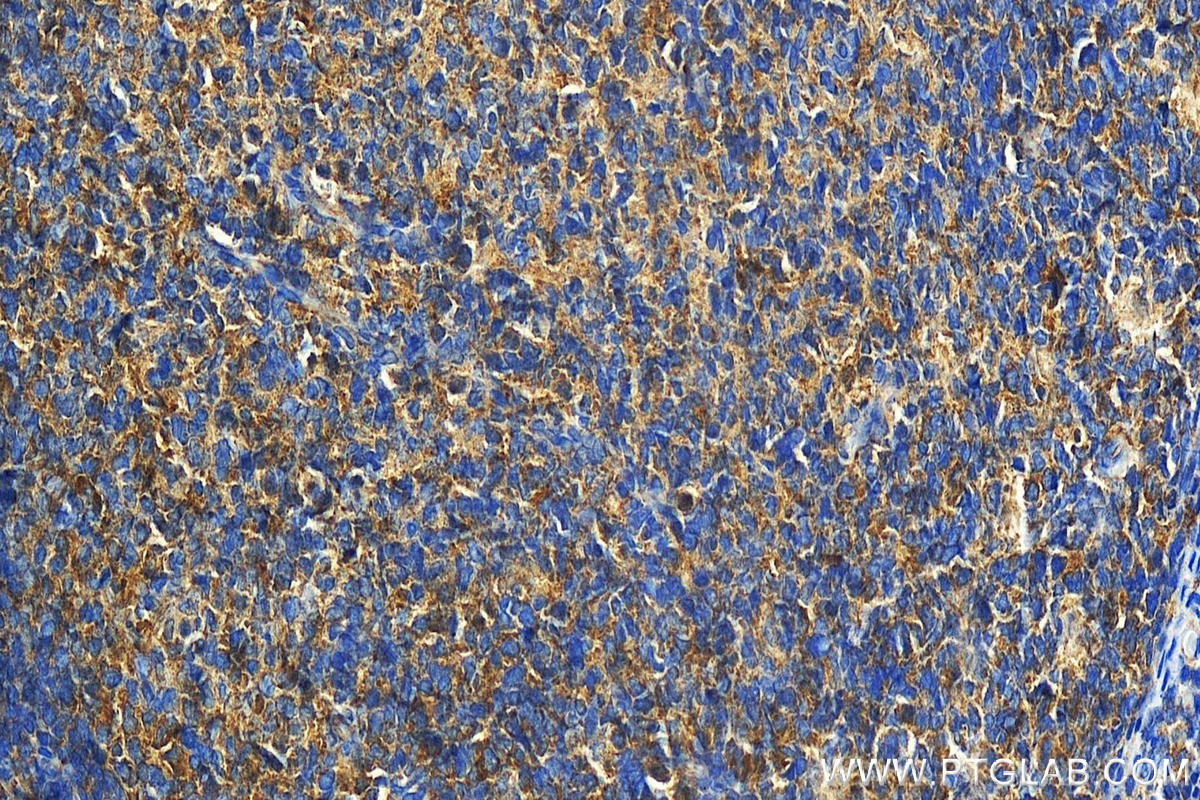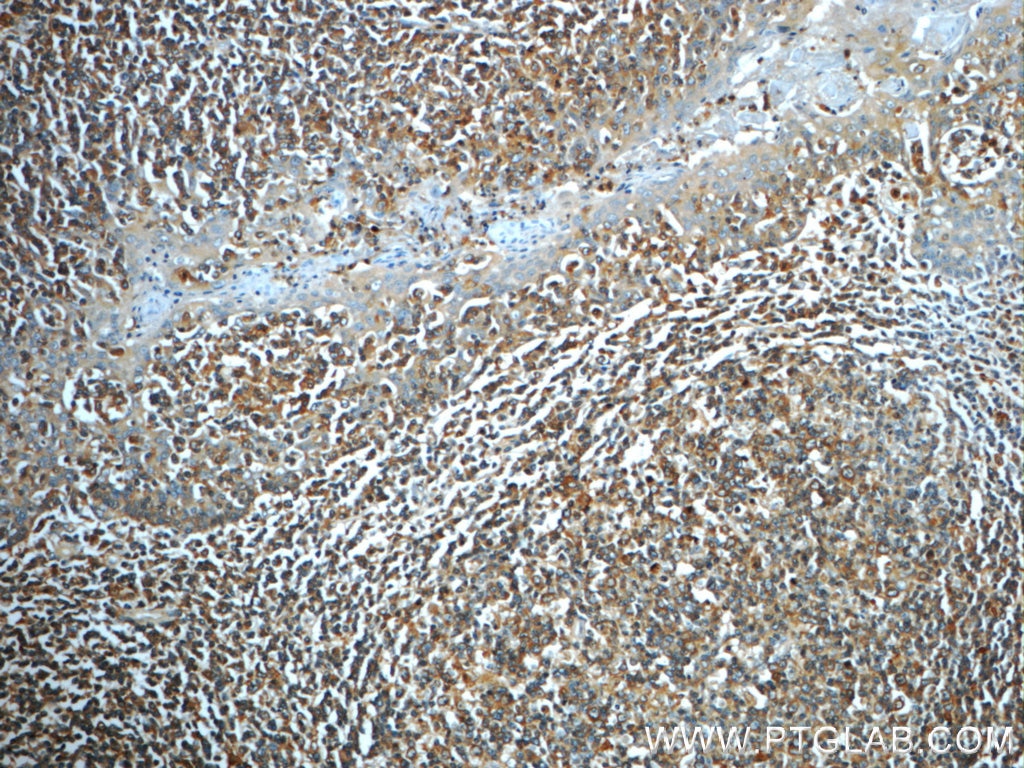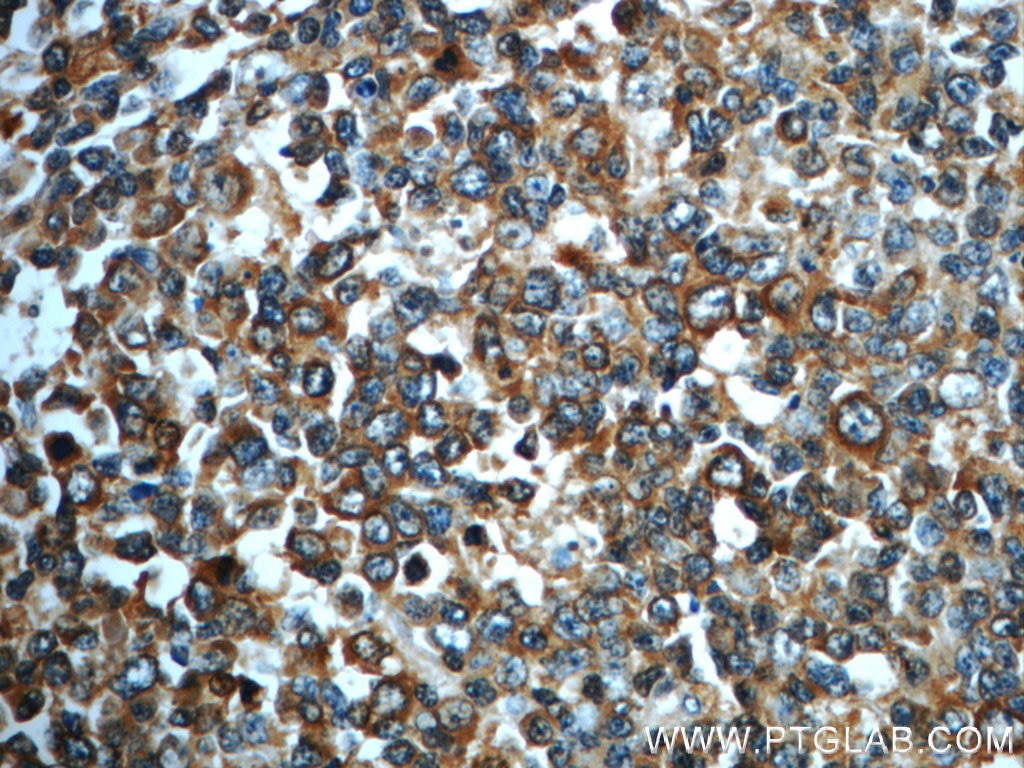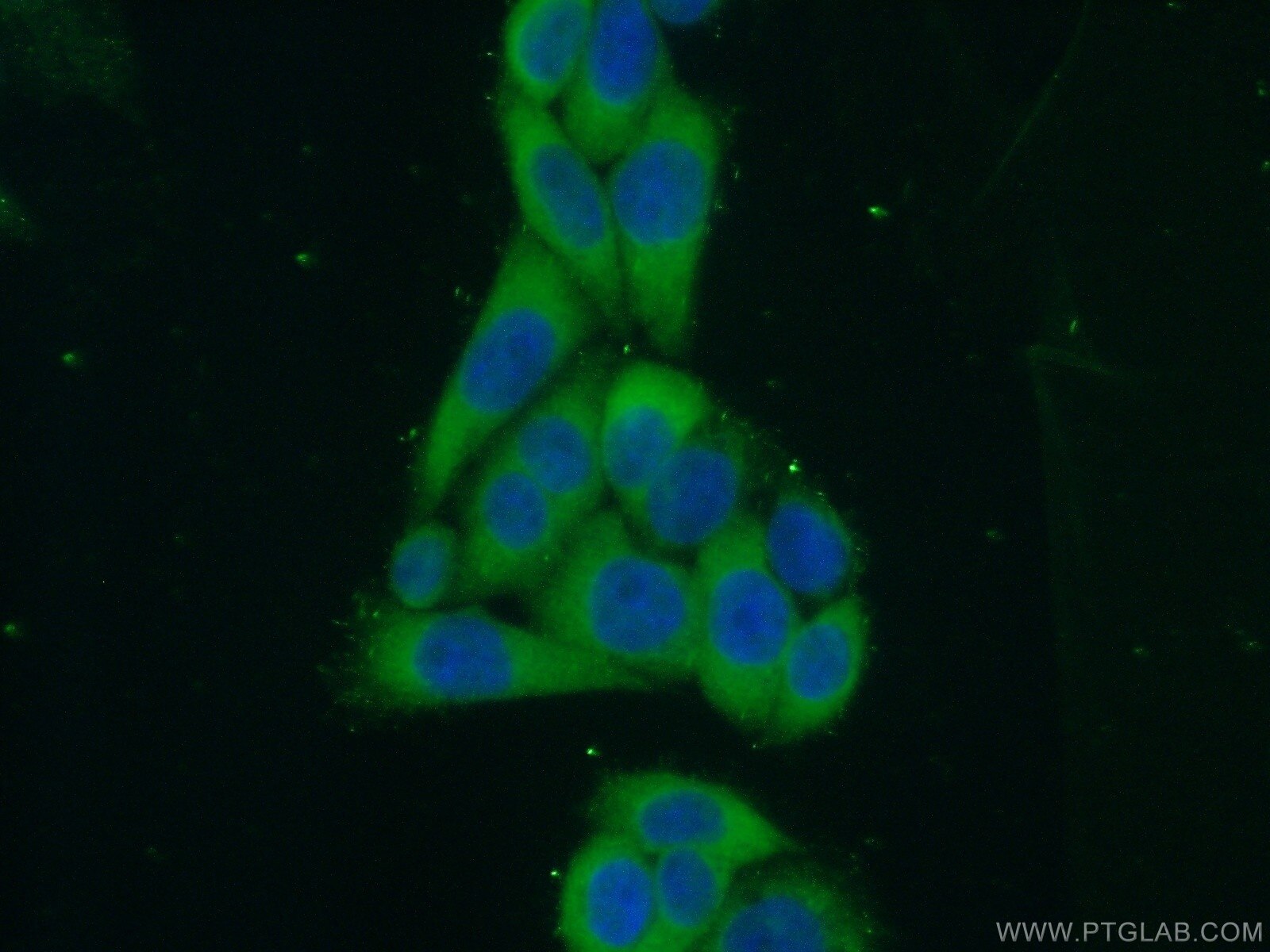Validation Data Gallery
Tested Applications
| Positive WB detected in | HeLa cells, mouse spleen tissue, A431 cells, K-562 cells, Raji cells, rat spleen tissue |
| Positive IP detected in | HeLa cells |
| Positive IHC detected in | human tonsillitis tissue, human ovary tumor tissue Note: suggested antigen retrieval with TE buffer pH 9.0; (*) Alternatively, antigen retrieval may be performed with citrate buffer pH 6.0 |
| Positive IF/ICC detected in | HeLa cells |
Recommended dilution
| Application | Dilution |
|---|---|
| Western Blot (WB) | WB : 1:1000-1:6000 |
| Immunoprecipitation (IP) | IP : 0.5-4.0 ug for 1.0-3.0 mg of total protein lysate |
| Immunohistochemistry (IHC) | IHC : 1:800-1:3200 |
| Immunofluorescence (IF)/ICC | IF/ICC : 1:20-1:200 |
| It is recommended that this reagent should be titrated in each testing system to obtain optimal results. | |
| Sample-dependent, Check data in validation data gallery. | |
Published Applications
| KD/KO | See 3 publications below |
| WB | See 13 publications below |
| IHC | See 4 publications below |
| IF | See 5 publications below |
| IP | See 1 publications below |
Product Information
22092-1-AP targets IMPDH1 in WB, IHC, IF/ICC, IP, ELISA applications and shows reactivity with human, mouse, rat samples.
| Tested Reactivity | human, mouse, rat |
| Cited Reactivity | human, mouse |
| Host / Isotype | Rabbit / IgG |
| Class | Polyclonal |
| Type | Antibody |
| Immunogen | IMPDH1 fusion protein Ag17297 相同性解析による交差性が予測される生物種 |
| Full Name | IMP (inosine monophosphate) dehydrogenase 1 |
| Calculated molecular weight | 563 aa, 60 kDa |
| Observed molecular weight | 53-60 kDa |
| GenBank accession number | BC033622 |
| Gene Symbol | IMPDH1 |
| Gene ID (NCBI) | 3614 |
| RRID | AB_2878992 |
| Conjugate | Unconjugated |
| Form | Liquid |
| Purification Method | Antigen affinity purification |
| UNIPROT ID | P20839 |
| Storage Buffer | PBS with 0.02% sodium azide and 50% glycerol , pH 7.3 |
| Storage Conditions | Store at -20°C. Stable for one year after shipment. Aliquoting is unnecessary for -20oC storage. |
Background Information
IMPDH1(Inosine-5'-monophosphate dehydrogenase 1) is also named as IMPD1, IMP dehydrogenase 1 and belongs to the IMPDH/GMPR family. It catalyzes the rate limiting step of de novo guanine synthesis and an important target for the development of drugs with both chemotherapeutic and immunosuppressive activity. It may also have a role in the development of malignancy and the growth progression of some tumors. This protein has some isoforms produced by alternative splicing with the molecular mass of 53-65 kDa. This antibody may has cross reaction with IMPDH2 due to their high homology.
Protocols
| Product Specific Protocols | |
|---|---|
| WB protocol for IMPDH1 antibody 22092-1-AP | Download protocol |
| IHC protocol for IMPDH1 antibody 22092-1-AP | Download protocol |
| IF protocol for IMPDH1 antibody 22092-1-AP | Download protocol |
| IP protocol for IMPDH1 antibody 22092-1-AP | Download protocol |
| Standard Protocols | |
|---|---|
| Click here to view our Standard Protocols |
Publications
| Species | Application | Title |
|---|---|---|
Mol Cell ERK2 Phosphorylates PFAS to Mediate Posttranslational Control of De Novo Purine Synthesis. | ||
Mol Ther IMPDH1/YB-1 Positive Feedback Loop Assembles Cytoophidia and Represents a Therapeutic Target in Metastatic Tumors.
| ||
J Oncol The Role of Purine Metabolism-Related Genes PPAT and IMPDH1 in the Carcinogenesis of Intrahepatic Cholangiocarcinoma Based on Metabonomic and Bioinformatic Analyses
| ||
Cells Distinct Classes of Flavonoids and Epigallocatechin Gallate, Polyphenol Affects an Oncogenic Mutant p53 Protein, Cell Growth and Invasion in a TNBC Breast Cancer Cell Line. | ||
Int J Biochem Cell Biol Characterisation of inosine monophosphate dehydrogenase expression during retinal development: differences between variants and isoforms. | ||
Clin Chem Lab Med Reference standards for the detection of anti-mitochondrial and anti-rods/rings autoantibodies. |
